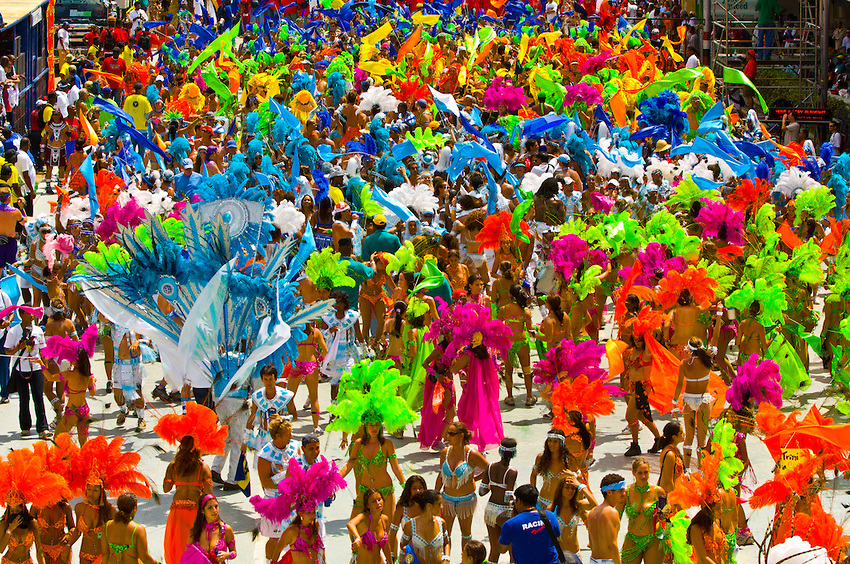..................................................... |
Day tripping, weekend escapes, beach breaks, eco adventures… |
Whether you are a local, an expatriate, a first-time or return visitor, you have found yourself in a unique Caribbean country, where both islands stand apart from the rest of the Caribbean chain. The islands offer endless possibilities for a local day trip, weekend getaway, leisurely beach vacation, or exhilerating eco adventure holiday. This island pride is well earned.Tobago is one of the few remaining Caribbean oases not overrun by tourism, with idyllic beaches, unspoilt rainforest, and folk traditions that have stood the test of time. |
..................................................... |
So where is Trinidad and Tobago, exactly? |
We’re at the southern end of the Caribbean island chain, just seven miles off the coast of South America. You can see the mountains of Venezuela clearly from Port of Spain. |
..................................................... |
Two islands, quite different? |
Yes — they’re about 21 miles apart, linked by regular air services and daily ferries. They’re quite different in character too, so it’s like getting two destinations for the price of one. |
..................................................... |
How are they different? |
Trinidad is extrovert, lively, full of music and activity and energy. Tobago is more introvert, more peaceful, with wonderful clear water and white-sand beaches. Tobago is where Trinidadians go to relax. |
..................................................... |
How big are the two islands? |
Tobago is quite small, only about thirty miles by ten, with a ridge of forested mountains down its spine, surrounded by cliffs and beaches and fringing reefs. Trinidad is bigger, about 65 miles by 50, though long peninsulas on its western coast add to its breadth. There’s a beautiful mountain range along the northern coast, and lower ranges of hills in the centre and south of the island, with flat or rolling plains between. |
..................................................... |
What about the people? |
About 1.1 million overall (or up to 1.3 million, depending on who you ask), with only 50,000 in Tobago. The language is English. In Trinidad, the population is very mixed, descended mainly from Africa and India – each just under 40% of the population – but also from Europe, the Mediterranean and the Middle East, even China, and a few from the original Amerindian settlers. There are some wonderful ethnic mixtures; over 20% of the population identifies as being of mixed ethnicity. |
..................................................... |
Is Trinidad and Tobago very different from other Caribbean islands? |
For one thing, it has lots of oil and natural gas, so it is wealthier than its neighbours in the Caribbean, and is not dependent on tourism. For a visitor, there’s more of a sense of being welcomed into somebody else’s life and home, rather than being channelled into special tourist enclaves where you don’t really experience the country itself. |
..................................................... |
Many people have a standard image of the Caribbean, maybe from all the posters and brochures — clear blue water, white-sand beaches, cloudless skies. Is Trinidad and Tobago like that? |
All of that can be found here, especially in Tobago. But there’s more! Caribbean-style Carnival, calypso and soca, the steelband — all this was created here. |
..................................................... |
Should I visit just one island? Toss a coin: heads or tails, you win!!! |
There are two sides to every story. On one side, there’s Trinidad: energetic, exciting; a melting-pot of races, cultures and ideas. This, for the most part, is a place of stimulus and excitement rather than relaxation. It demands participation: in a sport, a festival, a journey of discovery. A place that gives back what is put into it. |
..................................................... |
Talk de talk: some local dialect so you can talk like a Trini. |
CNN recently listed Trinidad as having the 10th Sexiest Accent in the World, saying: “For fetishists of oddball sexuality, the Caribbean island of Trinidad offers an undulating, melodic gumbo of pan-African, French, Spanish, Creole and Hindi dialects that, when adapted for English, is sex on a pogo stick… rubber life raft bobbing on a sea of steel drums.” |
..................................................... |
Trinidad’s Carnival |
..................................................... |
We tend to agree that “the greatest show on earth” is a cliché that doesn’t really describe Trinidad’s Carnival at its core… A more accurate term capturing the revellery of Carnival Monday and Tuesday might be “the world’s greatest street party!” But if you’re new to Trinidad Carnival, know that most everything else you’ve heard about it is true. Yes, people dance and party in the streets for two days straight. People let loose for weeks before the dancing and partying in the streets on Carnival Monday and Tuesday. Yes, it’s the mother of West Indian-style carnivals throughout the Americas. You can get a taste of the experience in New York, Toronto, London and other Caribbean strongholds the world over, but you won’t know true Trini Carnival experience until you return to the source. And yes, love it or hate it, it is a uniquely Trinidadian experience you are unlikely to forget. |
..................................................... |
De Winin’ Season |
..................................................... |
They call it the soca switch. It used to be from Boxing Day (the day after Christmas) that radio stations across the islands would switch from Christmas music (or whatever they were playing) to Carnival music. But these days, with Carnival band launchings starting as early as July, and soca artists unveiling their big Carnival tunes months before at carnivals in the diaspora, it seems that Carnival is ever-present. It’s no wonder, then, Trinidadians are accused of having a “Carnival mentality”. |
..................................................... |
Here are some pictures of |
..................................................... |
..................................................... |
 |
..................................................... |
..................................................... |
 |
..................................................... |
..................................................... |
 |
..................................................... |
..................................................... |
 |
..................................................... |
..................................................... |
 |
..................................................... |